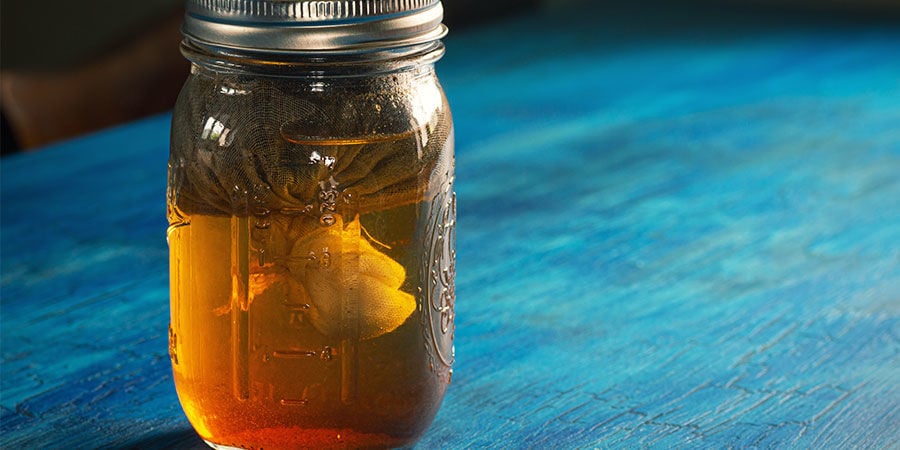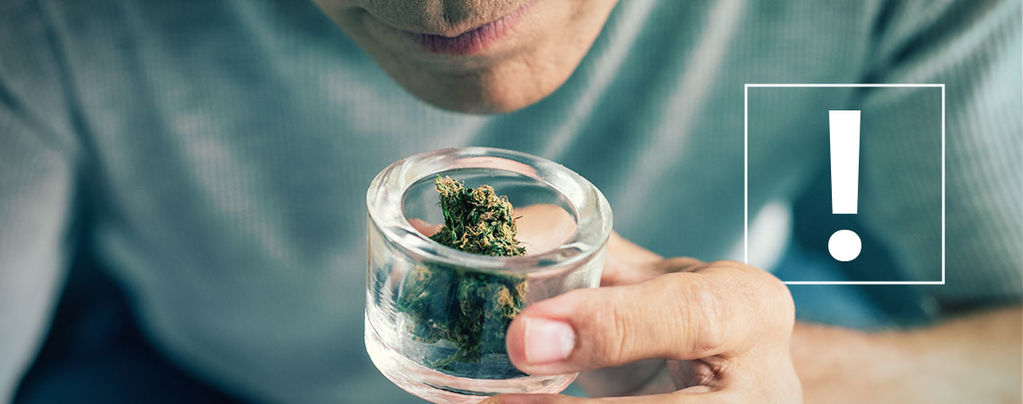
How To Recognise Cannabis Bud Impurities
You may pride yourself on only picking the best buds out there, but even the most selective among us end up with impure cannabis once in a while. Whether it's through physical appearance, flavour, or texture of the weed, contaminated nugs will reveal themselves. Today, we'll show you how to detect impurities and avoid them in the future.
Most times, you may consider yourself a connoisseur when picking out weed, confident your stash is free of impurities. In some situations, though, you may not get a good enough look at the buds, or you may encounter an unfamiliar strain. The flower may seem fine at first, but a closer inspection reveals that something is off. You might not be able to tell what’s wrong right away, but you notice some issue with the texture, aroma, or even the taste, telling you something is afoot.
To help you avoid issues with cannabis contaminants and impurities, we’ve compiled a list of methods you can use to detect any unwanted substances, as well as strategies to help you avoid these risks in the future. We'll also go through the most common contaminants found in cannabis buds, and how to recognise them.
How To Detect Cannabis Contaminants
Before you can figure out what, exactly, is in (or on) your cannabis, you need to know how to actually analyse it. Thankfully, you shouldn’t have to do much more than touch or smell it. However, if you’re still apprehensive, there are ways you can find contaminants past that point as well.
Step 1: Inspect Your Cannabis Visually

To start, there will be few signs more telling than those you can see on the surface of your buds. We all love frosty buds, of course, but if they seem a bit too covered in a shiny, crystalline substance, that may not be trichomes. You can also shake your buds out and see if any sand grains, crystals, powders, or other substances emerge. If they don’t shake out from the buds, take a look in the package, as there may be some questionable bits left inside.
The naked eye can do good work here, but you’ll need a microscope for a comprehensive visual inspection. We wouldn’t expect you to have a full lab-approved device in the house, but pocket microscopes are decently affordable, convenient, and offer a much closer look at your buds.
Step 2: Feel Your Cannabis Buds
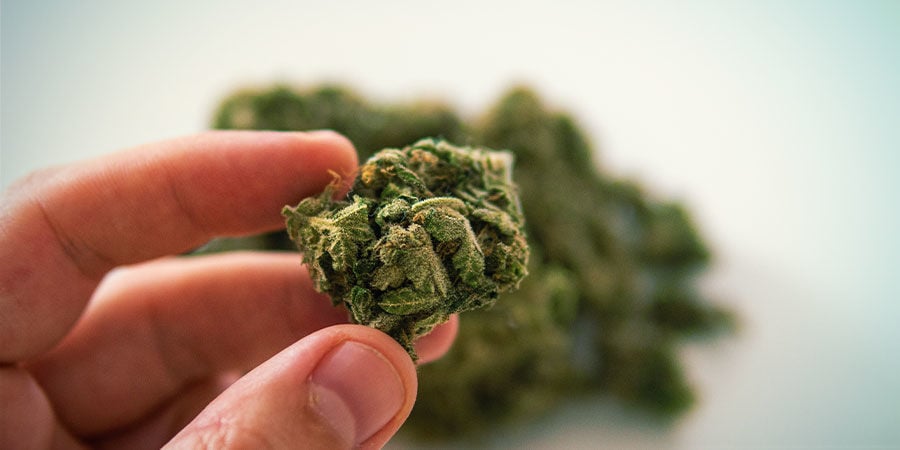
If things seem all good after you take a close look, your sense of touch should guide you closer to the answer. When you pick up the buds, do they feel a bit heavier than they should? Are they crumbling to the touch, falling apart when you apply a bit of force with your fingers? How do they react when exposed to air? Do they dry out, or do they retain their moisture?
If any or multiple of these conditions are met, you may have some contaminated buds on your hands. You may not be able to tell what’s in them yet, but these red flags usually point in the direction of contaminants.
Step 3: Smell and Taste Your Weed Before Lighting Up
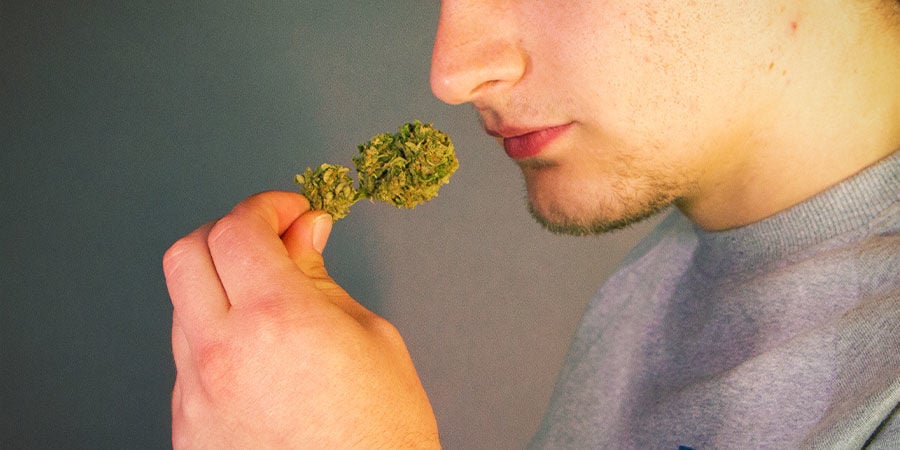
The above two tests can tell you a good amount, sure, but sometimes you’ll need to give the buds a whiff to get a better read on the situation. Now, this may be slightly difficult if you’ve got an unfamiliar strain. However, even then, you should have some sense of what a good nug smells like. If you find there’s even a slight chemical aroma, or something otherwise unnatural, we would recommend going with your gut and throwing it away.
If you find the scent isn’t revealing, however, you could try to lick the bud itself and give it a taste. This might not tell you a lot, as most people don’t lick their cannabis buds, and therefore don’t have a good benchmark for the “standard” taste. However, if there are any harsh chemicals present, your taste buds will be sure to tell you immediately.
Step 4: Pay Close Attention When Lighting a Joint, Pipe, or Bong
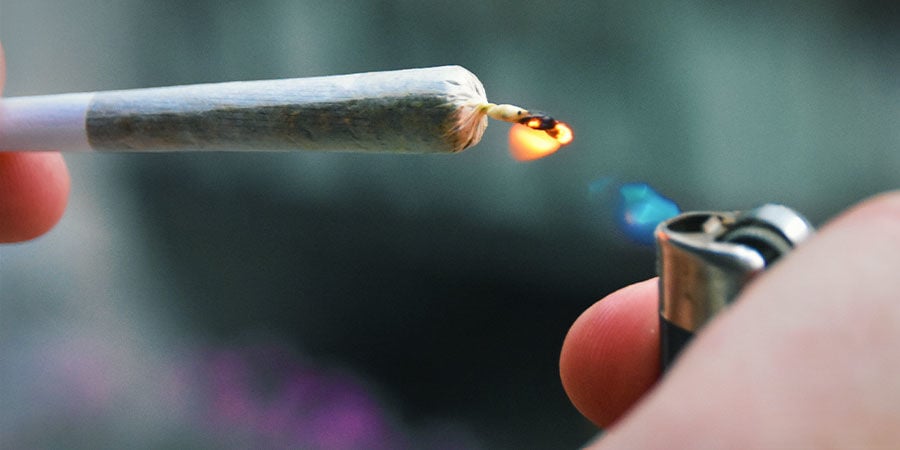
Your buds may seem good enough to smoke or vape at this point, and you may be right, but the inspection isn’t over yet. Now that you’re feeling confident enough to light up, take note of what it looks and sounds like when your weed meets the flame. Specifically, look at the tip of your joint, or the top of your bowl if you’re using a pipe or bong. Does the weed let off sparks when you inhale? Can you hear a crackling sound as you pull? If so, there’s a very good chance your bud is contaminated, and you should avoid hitting it more than you already have.
Step 5: Pay Close Attention to the Flavour and Smell of the Smoke or Vapor
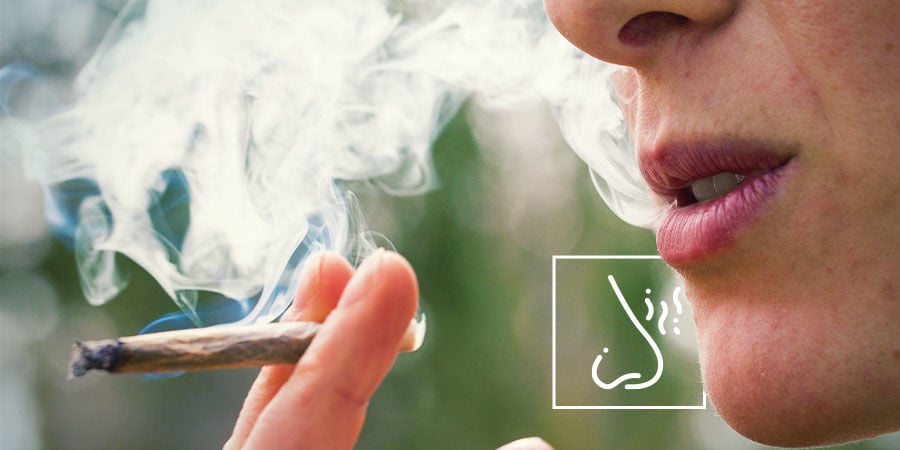
On top of those visual and audio signals, you can further analyse the bud with your senses of scent and taste. If the smoke or vapor smells especially harsh, for instance, it’s reasonable to suspect weed isn’t the only substance that caught fire. Along with a hazardous aroma, hits of impure buds will likely leave a plastic-like and chemical flavour on your tongue. That, of course, is not naturally occurring in cannabis, and is a clear sign you should put the weed down.
Step 6: Check Your Ashtray
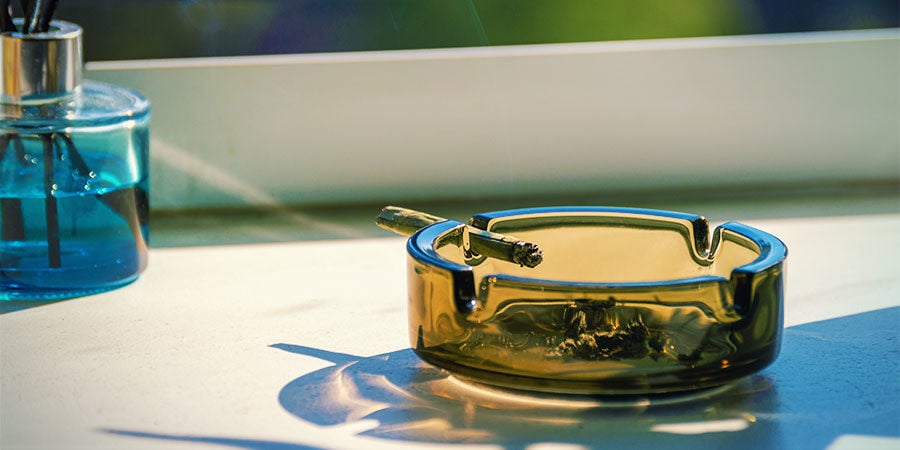
Lastly, you could glean more knowledge from the ash your bud leaves behind. Normally, ash is a shade of dark grey, notably dry, and soft to the touch. Ash from contaminated buds, though, will often be jet black, hard to the touch, and noticeably greasy. Oily substances in ash, as you might suspect, are the product of heated-up contaminants in your stash.
Different Kinds of Cannabis Contaminants
So, what contaminants are you most likely to find, should you find any? As it turns out, there are a wide variety of substances, some more toxic than others, that can make their way into your buds. Below, we’ll be discussing the effects and telltale signs of each.
Sugar

At first, the idea of a cannabis plant being contaminated with sugar might sound strange. However, certain dishonest growers have found that they can increase the weight of their yield by making a liquid sugar solution, spraying it onto their buds, and letting it dry. Since people specifically look for sticky, heavy buds, casual stoners and others not paying attention wouldn’t notice an issue at first. In fact, based on appearance, they might even be more drawn to these buds than more natural selections. Unfortunately, the smoking experience is not an enjoyable one.
How To Recognise Sugar
The primary sign that your cannabis contains sugar is a particularly heavy and sticky feel. You’ll also be able to smell and taste it with ease (it is sugar, after all). Once you discover it, you should do away with the buds, as lighting and inhaling sugar can introduce some nasty toxins into your system. This has been confirmed to happen in tobacco, and while the same research hasn’t been done on cannabis, it’s likely a consistent issue.
Sand
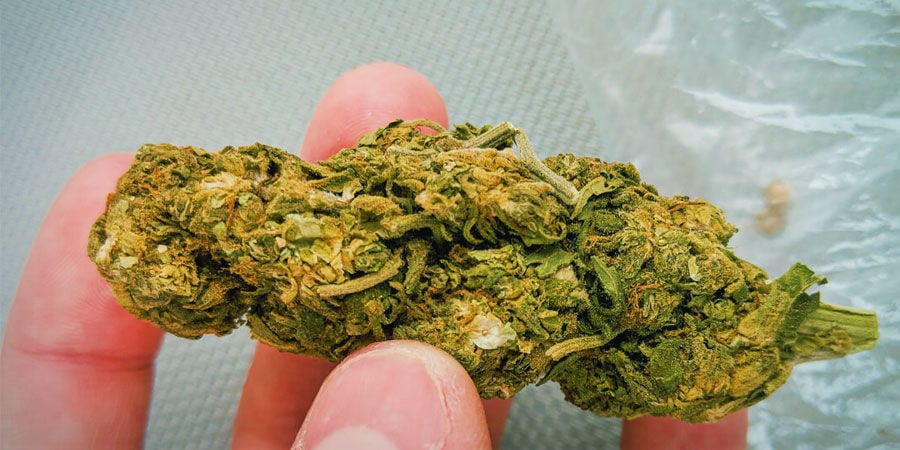
While most trusted farms, coffeeshops, and dispensaries check their products for outside contaminants, some natural residue can slip past inspection. Sand, for example, has an especially annoying habit of nuzzling into buds when they come close. There’s often sand in one place or another in a cannabis growing operation, too, so there’s a significant chance some could’ve made it into the mix on accident. Shady, untrustworthy growers, however, are also known to add it on purpose to give their buds a shinier look and heavier feel.
How To Recognise Sand
Thankfully, most sand will shake off in the packaging. That being said, you’ll still need to be diligent in recognising it once you’re holding the bud. You’ll be able to find some by shaking the buds out more, but you won’t find the majority until you grind it all up and start sifting through. Once everything is separated and spread out, it should be significantly easier to find sand and sift it out of your bud.
Brix Fertiliser
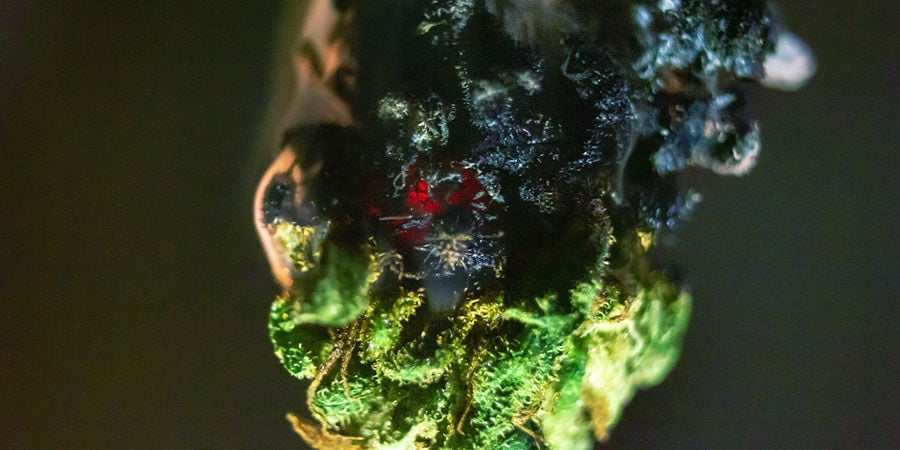
Unlike most other fertilisers, brix fertilisers are specifically designed to increase the amount of certain carbohydrates and sugars in your plant. Plants need a certain amount of brix to survive, but it’s usually met by standard soil. However, brix fertilisers can be used to supplement a deficiency or enhance regular growth. As it goes, though, more devious, profit-driven growers use it in excess. In fact, they’ll treat their cannabis with it after harvesting, dipping their buds in it and hanging them up to dry. This makes them notably heavier, all while the fertiliser remains nearly invisible to the senses.
How To Recognise Brix Fertiliser
Unfortunately, you’ll have a hard time recognising brix fertiliser on your buds through touch and scent alone. To figure it out for sure, you’ll have to see whether the bud burns harshly when you smoke or vape it, or leaves behind a chemical taste on your tongue. Partaking in weed laced with fertilisers, of course, is extremely unhealthy, and we strongly suggest throwing away any buds contaminated with these substances.
Hairspray

From the start, it may seem ridiculous to even have these two things in the same room. However, if you’re setting up bud displays and want to keep them looking shiny, this is a valid aesthetic strategy. These buds, of course, should never be used for anything besides display purposes, but some unreliable growers and dealers still hit their buds with it to make a quick profit. It makes the buds heavier and stickier, and a casual user might not notice anything’s wrong upon first inspection.
How To Recognise Hairspray
Once you take some hairspray-laced buds home, though, you’ll quickly discover issues. To start, the buds will feel suspiciously dense and compact—far past what’s naturally possible. Take a whiff, and you’ll instantly be hit with a pungent chemical aroma reminiscent of bad perfume. Thanks to these clear signs, you shouldn’t have to partake in it at all to notice the problem.
Industrial Pesticides or Fertilisers
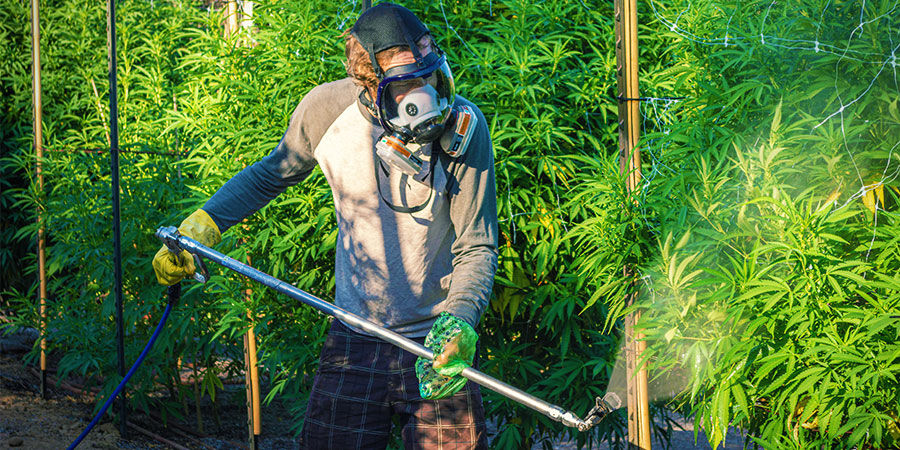
While their presence makes more sense than some other contaminants on this list, industrial pesticides and fertilisers in your nugs can still pose a significant health risk. Rather than ending up there due to negligence, these chemicals may appear in buds grown by legal distributors, as they are designed to protect crops and maximise growth. These can not only leave a harsh taste in your mouth, but send a bevy of hazardous chemicals into your lungs. Ingesting contaminated buds of this sort over significant lengths of time can lead to serious asthma symptoms, potential neurotoxicity, and various other health issues.
How To Recognise Industrial Pesticides or Fertilisers
Considering the risk they pose, it can be slightly worrying that these substances can avoid detection by all of our senses. Yes, we said earlier that it can make the smoke harsh, but it’s not always discernible. Oftentimes, you can smoke a fertiliser or pesticide-laced bud and not know it happened. Really, the only way to know whether your buds are contaminated or not is to get them tested by a lab. Thankfully, reliable coffeeshops and dispensaries will conduct these tests on their product before selling it, so you don’t have to worry about getting it done yourself.
Lead

Perhaps the most dangerous substance that can end up in your cannabis, it should go without saying that lead can do a lot of damage to your system if you heat it up and inhale it. It usually ends up in plants via contaminated soil, fertiliser, or even water, building up in the root system and finding its way to the buds in turn. If you partake in these contaminated buds, the lead inside can potentially damage your bones, liver, kidneys, and brain. If you happen to be pregnant, it’s worth noting those risks also pass on to the foetus.
How To Recognise Lead
You would likely notice something was off by the time you started smoking or vaping these buds, but you don’t want to get to that point for the sake of your health. Realistically, the only way you’ll find it is to use a microscope to look for the lead pieces. Thankfully, pocket microscopes are fairly accessible, so you don’t have to worry about getting a full desktop setup just to inspect your weed.
Fungus or Mould
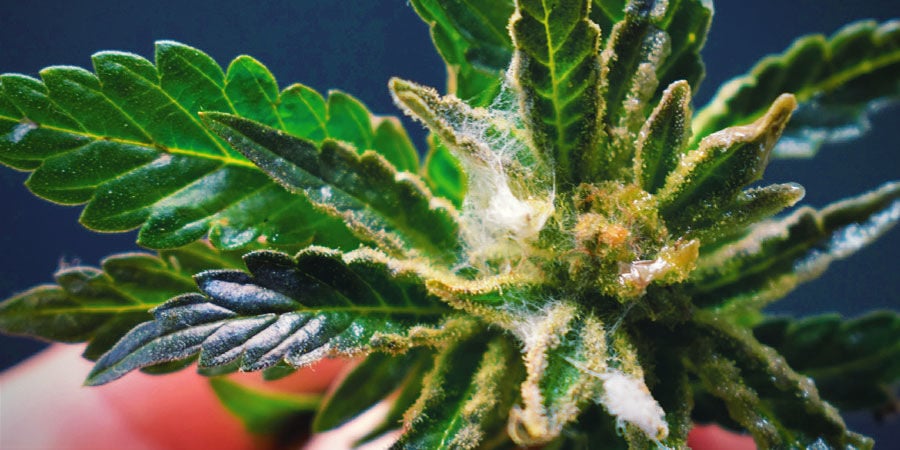
Perhaps one of the most common cannabis contaminants out there, fungus and mould are a constant threat to buds. Whether they’re still growing on the plant, drying after harvest, or sitting in your drawer after you buy them, your nugs can fall victim at any time if their environment isn’t up to par.
More specifically, excess moisture in the air can get trapped in the dense folds of your buds, accumulating over time and enabling the spread of mould and fungus in turn. If you end up inhaling those, it can flare up asthma symptoms if you’re dealing with it already, and can lead to various other lung issues if you aren't. These are just some of the health problems you may encounter.
How To Recognise Fungus or Mould
A pocket microscope can help you determine the presence of these contaminants, but you honestly shouldn't even need that to detect fungus or mould most of the time. If you happen to see white fur or suspicious dots spread across your buds, they’re more than likely bits of mould. A strange, unpleasant smell only serves to make detection easier.
Glass
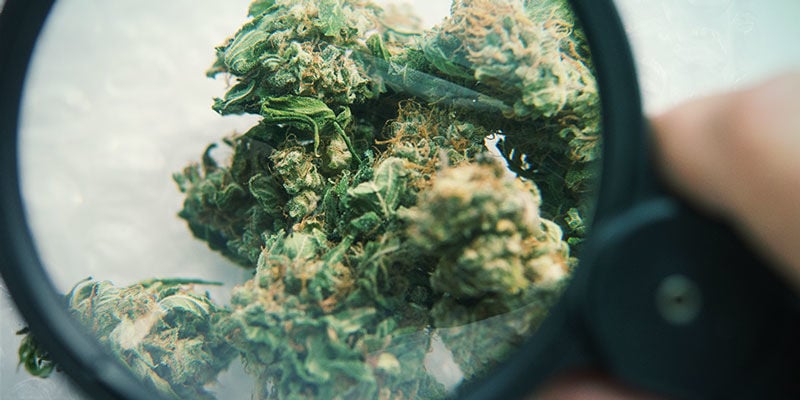
Glass may end up in buds accidentally via the industrial process, or by shady growers trying to bolster the weight and shine of their product. Regardless of how, it is extremely dangerous and can lead to various issues when smoking, including internal cuts in your throat and lungs. Over time, those scars can build up and lead to the development of silicosis in your respiratory system.
How To Recognise Glass
There are two primary ways to recognise glass in your cannabis: seeing and burning. Naturally, you’ll want to try the former method first; just pick up a pocket microscope (online or from a local shop) and take a close look at each bud. The bits of glass will sparkle and have a sharp appearance, clearly standing out from the trichomes. Burning is more hazardous, as the glass will eventually pop when it reaches high-enough temperatures. As a third option, you can roll a drinking glass over your nugs and listen/feel for any crunching or breaking.
Talc
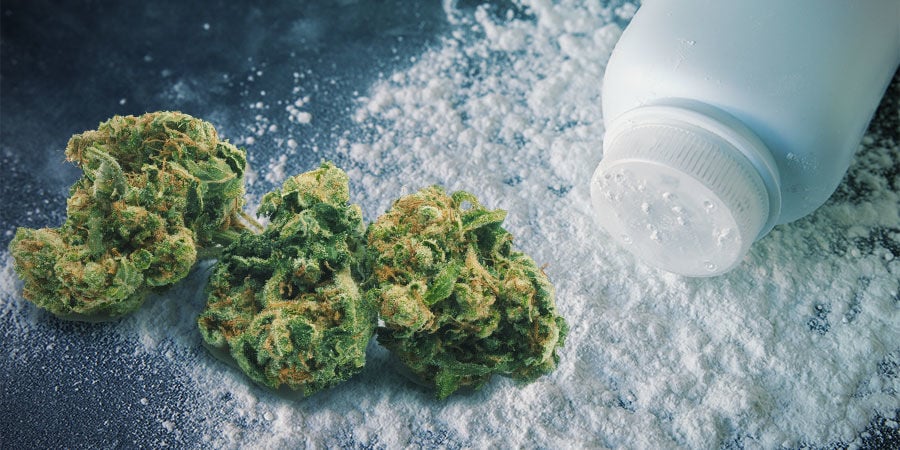
Known to some as soapstone, talcum powder is another known additive in illegal and unregulated cannabis. Its main purpose, as you might have guessed, is to increase the weight of buds and give them a more trichome-covered look. In that process, however, the growers and distributors responsible put you at risk of respiratory damage, which could potentially culminate in pulmonary talcosis.
How To Recognise Talc
From a marketing perspective, the downside of talc also happens to be your main advantage in recognising this impurity. See, buds that have been treated with talc are usually a far lighter colour than pure ones, and their aromas and flavours are significantly muted as well. In turn, you hopefully won’t have to do much more than look at these buds before tossing them out.
How To Prevent Buying Contaminated Cannabis Buds
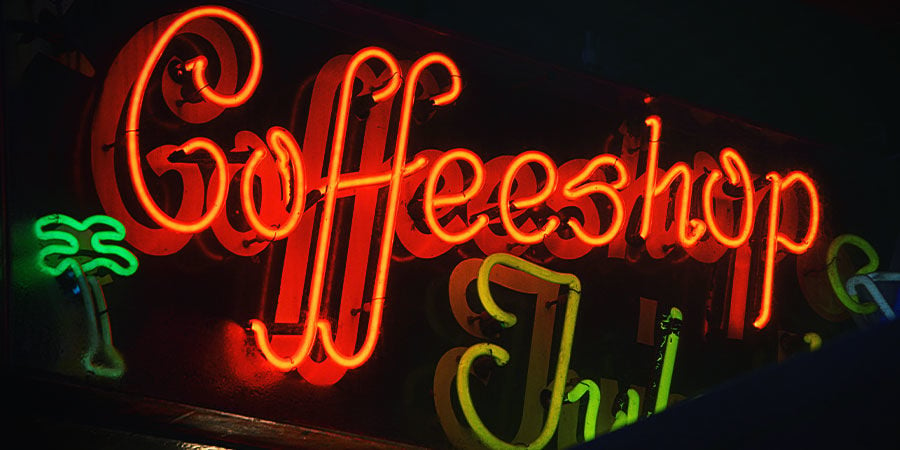
Now that you have a much clearer idea of the potential threats, it’s time to figure out how you can avoid these risks in the first place. After all, acting with a preventative mindset is the way to ensure there’s no issue to discover in the first place.
Grow Your Own Weed
To start, there’s no better way to know what exactly you’re smoking or vaping than to grow it yourself. When you can monitor what nutrients your cannabis is getting, what your plant’s environment is like, and what conditions your buds are dried and stored in, you can be certain no unwanted contaminant will spoil your sessions.
Only Purchase From a Trusted Coffeeshop or Dispensary
If that isn’t possible, though, or if you’ve run out of your own stash, a trustworthy coffeeshop or dispensary should have you covered. These places have dedicated staff members that will inspect every product to the best of their ability. Their reputation and business are on the line, after all, so they should make sure every product that passes through is safe and of good quality.
Check for Contamination Before Purchase
Lastly, if you still want to take extra precautions, you can use some of the methods we discussed earlier in this article to inspect your nugs before you make the purchase. If you aren’t able to do the inspection at the store, you should still make a point to do so when you bring your weed home. You might not be able to save money at that point, but you can still save your health, which we believe is far more important.
What Can You Do About Contaminated Weed?
If you’ve still found yourself with contaminated buds, not all hope is lost. As long as you can find the time and proper materials, water curing is a valid strategy to cleanse your bud of specific contaminants, such as sugar and sand. It won’t get rid of every impurity, but it’ll rinse away the majority of them without getting in the way of THC, other cannabinoids, or terpenes. As a result, you’ll have a much purer and smoother-hitting stash. No matter how you go about taking care of impurities in your cannabis, just make sure you stay safe and enjoy your herb responsibly.












 United States
United States

